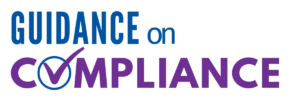In recent months, LW Consulting, Inc. (LWCI) has been assisting clients with responding to Safeguard Unified Program Integrity Contractors (UPICs) and Medicare Administrative Contractors (MACs). During this process, LWCI has observed an increase in denials purely based on delayed or late entries within the documentation submitted for review to the UPICs and MACs. Over the next few weeks, LWCI will be reviewing the Centers for Medicare & Medicaid Services’ (CMS) signature requirements and late entries regulations and guidance. In this blog, we will review the importance of late entry compliance.
What is a Late Entry?
When a pertinent entry is missed or not written in a timely manner, a late entry is used to enter the information in the medical record. A late entry is a form of an addendum when it provides additional information not included with the original entry.
A late entry should be labeled “late entry” with the actual creation date and time being entered. Typically, electronic documentation is defaulted to have this captured within the electronic signature. For hand-written documentation put the current date and time and indicate the date for which the late entry is written. Identify the source of information for the late entry if applicable.1
Late entries should be added as soon as possible or within the company policy and procedure. The person writing the note must have total recall of the omitted information. The author of the late entry signs or initials the late entry.1
Key Strategies to comply with Timely Documentation!
Documenting at the point of service or soon thereafter helps ensure thoroughness and accuracy of documentation. CMS expects all services provided to beneficiaries be documented in the medical record when the services are rendered.1 Another CMS reference states, “The service should be documented during, or as soon as practicable after it is provided in order to maintain an accurate medical record.”2 Although this reference is taken from the Medicare Claims Processing Manual, the section covering Evaluation and Management Services provided by physicians and non-physician practitioners (nurse practitioners, clinical nurse specialists and others); the principle applies to all providers and all situations when patient documentation is created.
How should, “as soon as practicable” be interpreted? Wisconsin Physician Services Government Health Administrators suggest a time frame of 24 to 48 hours.3 The Medicare Benefit Policy Manual provides guidance for therapists regarding timeliness of progress reports. According to the manual, “If the clinician has not written a progress report before the end of the progress reporting period, it shall be written within 7 calendar days after the end of the reporting period.”4
Why is Timely Documentation Important?
Health care documentation serves as the patient’s record of his/her medical (functional) status, the care being planned and provided, and prognosis. It is important to include sufficient information to provide a comprehensive medical picture of the patient—past and present. The medical record is a vitally important communication tool to ensure safe care, continuity of care and quality care. To meet these objectives, documentation must be timely.
CMS gives an example where timely documentation supports medical necessity. “Thorough and timely documentation with respect to treatment goals can help clearly demonstrate a beneficiary’s need for skilled care in situations where such need might not otherwise be readily apparent, as when the treatment’s purpose changes (for example, from restoration to maintenance), as well as in establishing the efficacy of care that serves to prevent or slow decline-where, by definition, there would be no “improvement” to evaluate.”5
LWCI sometimes audits documentation entered weeks after the service is provided and, in those circumstances, the accuracy of the documentation can be questioned. When there is a request for additional documentation from the MAC , Recovery Audit Contractor (RAC), Supplemental Medical Review Contractor (SMRC) or other review organizations; there may be increased scrutiny if the documentation submitted is consistently written several days or weeks after the service is provided. The more time lapses between service provision and documentation of the service, the less reliable the documentation may appear when attempting to defend the services upon appeal for a denial of a late entry.
Keep in mind, Section 1815(a) of the Social Security Act states “…no such payments shall be made to any provider unless it has furnished such information as the Secretary may request in order to determine the amounts due such provider under this part for the period with respect to which the amounts are being paid or any prior period.”6
Make every effort to document services when they are rendered. Late entries should not be a routine practice. When late entries are needed, follow the guidelines for entering late entries.
Entering Late Documentation
- Clearly identify the late entry as such.
- Indicate the date for which the late entry is written.
- Indicate the current date.
- Sign or initial the late entry.
Resources:
- Medicare Program Integrity Manual Chapter 3 – Verifying Potential Errors and Taking Corrective Actions, Section 3.3.2.5 – Amendments, Corrections and Delayed Entries in Medical Documentation.
- Medicare Claims Processing Manual Chapter 12 – Physicians/Nonphysician Practitioners, Section 30.6.1 A – Selection of Level of Evaluation and Management Service – Use of CPT Codes.
- WPS-Government Health Administrators. (Published November 10, 2017, Update May 07, 2019). Complete and Timely Documentation of Medicare Services.
- Medicare Benefit Policy Manual Chap 15 – Covered Medical and Other Health Services, Section 220.3 D – Documentation Requirements for Therapy Services -Progress Report, Delayed Reports.
- Medicare Benefit Policy Manual Chapter 8 – Coverage of Extended Care (SNF) Services Under Hospital Insurance, Section 30.2.2.1 Documentation to Support Skilled Care Determinations.
- Medicare Program Integrity Manual Chapter 3 – Verifying Potential Errors and Taking Corrective Actions, Section 3.2.3 B – Authority to Collect Medical Documentation.
Does your facility need assistance with timely documentation? LW Consulting is ready to assist you.

